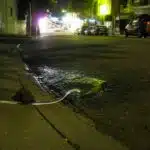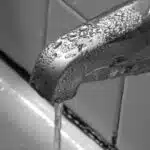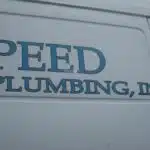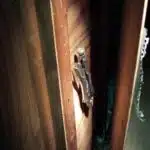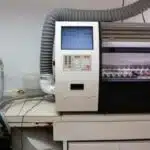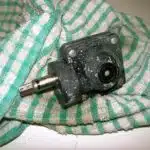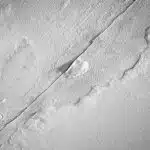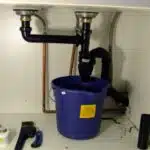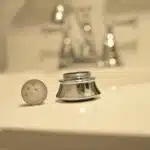Replacing a bathtub drain in a mobile home can seem like a daunting task, but with the right tools and knowledge, it can be done quickly and efficiently. As an expert in mobile home plumbing, I have seen firsthand the frustration that can come from dealing with a faulty bathtub drain. A properly functioning drain is essential for maintaining a clean and hygienic bathroom environment.
Mobile homes present unique challenges when it comes to plumbing repairs due to their compact size and construction materials. However, replacing a bathtub drain is a repair that can be accomplished by most homeowners with basic DIY skills. In this article, we will cover the necessary steps to replace a bathtub drain in a mobile home, including the tools needed and tips for navigating any complications that may arise during the process. By following these steps, you will be able to restore your bathroom’s functionality and enjoy the peace of mind that comes with knowing your plumbing system is operating smoothly.
Assessing The Problem
Bathtub drain problems are common in mobile homes due to the frequent movement and vibrations that cause pipes to loosen or break. Common causes of bathtub drain issues include clogs, leaks, and damaged components. Clogs can occur when hair, soap scum, or other debris accumulates over time, leading to slow drainage or complete blockage. Leaks may develop due to cracks or breaks in the pipes or worn-out gaskets and seals.
One of the first things you should do when faced with a bathtub drain problem is to conduct a visual inspection. This step will help you identify any visible signs of damage or wear and tear that may be contributing to the problem. Check for leaks around the drain area and look for any cracks or breaks in the pipes. You should also check if any parts of the drain assembly are loose or missing.
Once you have assessed the problem and identified the root cause of your bathtub drain issues, it’s time to gather the necessary tools and materials needed for repair. Depending on what needs fixing, you may need a variety of plumbing tools such as pliers, wrenches, pipe cutters, and sealants. It’s important to have all necessary tools on hand before starting any repair work to avoid delays or complications during the process.
Gathering The Necessary Tools
After assessing the problem with your bathtub drain in a mobile home, the next step is to gather the necessary tools for replacing it. It is important to select the right tools to ensure that you don’t damage any of the surrounding plumbing fixtures or cause any leaks. The following bullet point list outlines the tools that you will need:
- Plunger
- Drain key or pliers
- Putty knife
- Screwdriver
Before you begin replacing the bathtub drain, you should also prepare the work area. This involves removing any items that may obstruct your access to the drain, such as shampoo bottles or bath mats. You should also clean the area around the drain with a mild cleaning solution and a sponge. This will help to ensure that there is no debris or grime that could interfere with your work.
Once you have selected the right tools and prepared your work area, you can move on to turning off the water supply. This is an essential step in preventing any leaks or water damage during the installation process. To turn off your water supply, locate your home’s main shut-off valve and turn it clockwise until it stops. If you are unsure about how to locate this valve, consult your mobile home’s owner manual or contact a professional plumber for assistance.
Turning Off The Water Supply
To begin the process of replacing your bathtub drain in a mobile home, it is crucial to turn off the water supply. This step is important because it ensures that no water will flow through the pipes during the replacement process, which can cause damage or other issues. It is also an excellent opportunity to inspect your water supply and identify any potential leaks or problems.
The importance of water conservation cannot be overstated, especially in a mobile home where resources may be limited. Turning off the water supply when not in use can help save money on utility bills and prevent unnecessary waste. By taking steps to conserve water, you are not only benefiting yourself but also contributing to a healthier environment.
When inspecting the water supply, there are a few steps to follow. First, locate the shut-off valve near your bathtub’s plumbing system and turn it off completely. Next, remove any attachments or hoses connected to the bathtub faucet and check for signs of corrosion or damage. Finally, run some water through the pipes to ensure that there are no visible leaks or issues with your plumbing system.
Transitioning into the subsequent section about removing the drain cover, it is essential to ensure that your water supply is turned off before proceeding with any further steps. Once you have confirmed that there are no leaks or problems with your plumbing system, you can move on to removing the drain cover and beginning the process of replacing your mobile home bathtub drain.
Removing The Drain Cover
As the saying goes, “out with the old, in with the new.” Removing the drain cover is usually the first step in replacing a bathtub drain in a mobile home. It’s important to note that not all drain covers are removed in the same way, so be sure to consult your manufacturer’s instructions before proceeding.
Once you’ve familiarized yourself with the removal process, it’s time to get started. The most common method involves removing screws that secure the drain cover to the bathtub. Using a screwdriver or drill, carefully loosen and remove each screw one at a time. Be sure to place them somewhere safe where they won’t get lost or damaged.
After removing all of the screws, gently lift up on the drain cover and set it aside. You may need to clean out any debris that has accumulated in and around the drain area before proceeding to the next step. This will ensure that your replacement drain fits properly and functions as intended. With this step complete, you’re ready to move on to loosening the drain flange and continuing with your bathtub drain replacement project.
Loosening The Drain Flange
- Gathering the necessary supplies for replacing a bathtub drain in a mobile home is essential and should include things like a screwdriver, a pair of pliers and a wrench.
- Once the supplies have been gathered, the next step is to loosen the nuts that hold the drain in place.
- These nuts are typically located at the base of the bathtub drain and should be loosened with a wrench.
- Care should be taken not to over-tighten the nuts once they have been loosened, as this could cause damage to the drain and the surrounding plumbing fixtures.
Gather Supplies
As a mobile home plumbing expert, it is essential to gather the necessary supplies before starting the process of replacing a bathtub drain. Shopping tips for buying these supplies include researching prices and comparing them across different stores. Additionally, it is important to consider budget considerations when purchasing these supplies.
When gathering supplies, one should start by checking the size of their current drain flange and purchase a replacement that fits perfectly. Plumbers putty or silicone sealant is also needed to create a water-tight seal around the new drain flange. A drain removal tool, pliers, and screwdrivers may also be required in order to remove the old drain flange.
Lastly, it is crucial to make sure that all necessary supplies are present before beginning the task of replacing the bathtub drain. This will save time and prevent any additional trips to the store in case anything is missing. Being well-prepared with shopping tips and budget considerations can ensure that this process goes smoothly without any unforeseen complications.
Loosen Nuts
To replace a bathtub drain, the first step is to loosen the drain flange. This process involves removing the old drain flange by loosening the nuts that secure it in place. Before starting, it is important to ensure that all necessary supplies are readily available, including a drain removal tool, pliers, and screwdrivers. Additionally, removing any rust from the nuts and lubricating them can make this process easier.
When attempting to loosen nuts, it is essential to use the proper tools and techniques to avoid damaging the plumbing system. The first step is to locate the nuts that need to be removed. Typically, there are two nuts located underneath the bathtub that hold the drain flange in place. These nuts may be covered with a layer of rust or corrosion that needs to be removed before they can be loosened.
Removing rust from nuts can be accomplished using a variety of techniques such as applying vinegar or using a wire brush. After cleaning off any rust or debris around the nuts, it is important to apply a lubricant such as WD-40 or PB Blaster. This will help ease tension between threads by reducing friction during unscrewing. Once everything is set up correctly, use caution when loosening these nuts so as not to damage any surrounding parts of your mobile home plumbing system in case you encounter unexpected resistance while unscrewing them.
Removing The Old Drain
To begin the process of replacing a bathtub drain in a mobile home, you must first remove the old drain. This task can be accomplished by using lubricant to loosen any rust or debris that may have accumulated around the drain cover. Using a wrench, turn the drain counterclockwise until it comes loose. If necessary, use pliers or a screwdriver to help loosen any stubborn parts.
Once the old drain is removed, dispose of it properly by placing it in a trash bag or container for disposal at your local waste management facility. It is important to dispose of the old drain cover properly to avoid any hazards or potential environmental damage. Take care when handling sharp objects and make sure to wear gloves and protective clothing as needed.
Now that the old drain has been removed and disposed of, you can move on to installing the new drain. However, before proceeding with installation, make sure to thoroughly clean and inspect the area around where the old drain was located. This will ensure that there are no obstructions or debris that could interfere with proper drainage once the new drain is installed.
Installing The New Drain
Gathering the necessary supplies for replacing a bathtub drain in a mobile home includes a new drain and stopper assembly, a drain wrench, a hacksaw, and a putty knife.
Preparing the area for replacing a bathtub drain in a mobile home involves shutting off the water to the bathtub, removing the old drain and stopper assembly, and cleaning away any debris in the drainpipe or drain opening.
Careful examination of the drainpipe and the drain opening are necessary to ensure the proper fit of the new drain and stopper assembly.
When replacing a bathtub drain in a mobile home, it is important to use an appropriate sealant to ensure the drain is properly secured.
Gathering Supplies
When it comes to replacing a bathtub drain in a mobile home, there are several supplies that you will need to gather beforehand. In comparison to traditional homes, the process of replacing a drain in a mobile home can be more challenging due to the compact nature of the space. As such, it is essential that you have all of your supplies on hand before beginning the replacement process.
One tip for finding the right replacement drain for your mobile home is to take measurements of your existing drain before purchasing a new one. Mobile homes often have unique plumbing systems and may require specific types of drains that differ from those used in traditional homes. By taking measurements ahead of time, you can ensure that you select a replacement drain that fits properly and functions as intended.
In addition to measuring your current drain, it’s important to consider factors such as material composition and compatibility with your existing plumbing system when selecting a replacement. Be sure to choose high-quality materials that are designed specifically for use in mobile homes and consult with a professional if you’re unsure which type of drain is best suited for your needs. With the right supplies in hand, you’ll be well on your way towards successfully installing a new bathtub drain in your mobile home.
Prepping The Area
Before installing the new drain, it is important to properly prep the area to ensure a smooth replacement process. This involves prepping for removal of the old drain and taking safety considerations into account. To begin, turn off the water supply to the bathtub and remove any excess water from the area using towels or a wet/dry vacuum. Next, remove any screws or bolts that are holding the old drain in place. Depending on the type of drain, you may need to use a specialized tool or pliers to loosen and remove it.
When prepping for removal, it is important to take safety considerations into account. Wear protective gloves and goggles to avoid injury from sharp edges or debris that may be present during the removal process. Additionally, ensure that all electrical sources are turned off before beginning work in order to reduce the risk of electric shock.
Once the old drain has been removed, clean and inspect the area thoroughly before installing the new one. Use a cleaning solution and scrub brush to remove any debris or buildup from around the drainage hole. Take note of any damage or corrosion on surrounding pipes or fixtures that may need repair before proceeding with installation. By properly prepping the area for installation, you can ensure that your new bathtub drain functions effectively and safely for years to come.
Applying Plumbers Putty
Before applying plumbers putty, there are a few precautions that you need to take. First, make sure that the area around the drain is clean and dry. This will ensure that the putty adheres well to the surface. Second, wear gloves to protect your hands from any harmful chemicals in the putty. And finally, keep in mind that plumbers putty can stain certain surfaces like marble or granite. So be careful not to get it on these surfaces.
While plumbers putty is a popular choice for sealing bathtub drains, it’s important to note that there are alternatives available as well. One of these alternatives is silicone caulk which works just as effectively and doesn’t require as much time to set before use. Another option is using a rubber gasket which can be found at most hardware stores and provides a tight seal without any risk of staining surrounding surfaces.
In summary, when applying plumbers putty for bathtub drain replacement, take necessary precautions such as keeping the area clean and dry, wearing gloves and being mindful of potential stains on certain surfaces. However, if you’d prefer an alternative to plumbers putty, consider using silicone caulk or a rubber gasket instead. In the next section, we’ll discuss how to tighten the drain flange properly for optimal results.
Tightening The Drain Flange
Metaphorically speaking, the drain flange is the backbone of your bathtub’s drainage system. It is essential to ensure that it is tightly secured to avoid leaks and other related issues. In this section, we will discuss how to tighten the drain flange in your mobile home bathtub.
Before tightening the drain flange, it is crucial to apply a sealant around the underside of the flange. Using sealant will prevent water from seeping through and causing damages in the long run. You can use plumber’s putty or silicone sealant depending on what you have available in your toolbox.
Proper sealing technique involves applying enough sealant around the perimeter of the flange to create an impenetrable barrier. Once you have applied enough sealant, press down firmly on the drain flange and screw it back into place. Ensure that you do not overtighten as this could cause cracks or other damages to your bathtub’s surface. With these steps taken care of, you are now ready for the next section – replacing the drain cover.
Replacing The Drain Cover
When it comes to replacing the drain cover in your mobile home bathtub, there are a few things to keep in mind. First and foremost, it’s important to properly clean the area around the drain before installing a new cover. This will not only ensure a better fit, but also prevent any potential leaks from occurring down the line.
When cleaning the area around the drain, there are several methods you can use. One option is to simply wipe down the surface with a damp cloth and mild soap. Alternatively, you could use a solution of vinegar and baking soda to help remove any buildup or grime that may have accumulated over time. Whatever method you choose, be sure to thoroughly dry the area before attempting to install your new decorative drain cover.
Speaking of which, when selecting a new cover for your bathtub drain, there are countless options available on the market today. From sleek contemporary designs to more traditional styles featuring intricate patterns or motifs, there’s sure to be something that fits your personal taste and décor preferences. Just remember that while aesthetics are certainly important, functionality should always come first – so be sure to choose a cover that is well-suited for your specific plumbing needs.
As you prepare to move on from replacing your mobile home bathtub drain cover and onto testing for leaks, it’s important to keep in mind that this is one step you won’t want to skip. Even if everything appears secure at first glance, taking the time to conduct a thorough leak test can save you significant time and money down the line by catching any potential issues early on. With that in mind, let’s move on to our next section: testing for leaks after installing your new bathtub drain cover.
Testing For Leaks
As we move closer to replacing the bathtub drain in your mobile home, it is important to understand the significance of sealing. A properly sealed bathtub drain ensures that water only flows in and out of the system when it is intended to do so. This means that no water leaks into unwanted spaces, causing damage and potentially creating a breeding ground for harmful bacteria.
When considering whether to undertake this task as a DIY project or seek professional help, it is important to weigh your options carefully. While doing it yourself may seem like an attractive option, there are many potential pitfalls that can lead to costly repairs down the road. A professional plumber has the experience and knowledge necessary to ensure that the job is done correctly the first time around.
In order to test for leaks once you have successfully replaced the bathtub drain, turn on the water supply and let it run for a few minutes. While doing so, keep an eye out for any signs of leakage around the drain or surrounding areas. If you notice any issues, don’t hesitate to contact a professional plumber for assistance with resolving them. With proper attention paid to sealing and testing for leaks, you can rest easy knowing that your mobile home’s bathtub drain is in good hands. Now let’s move on to reconnecting the water supply.
Reconnecting The Water Supply
Connecting the pipes is the next step in replacing a bathtub drain in a mobile home. Make sure that the water supply is turned off before proceeding with this task. The first thing to do is to remove the old plumbing pieces and clean up any debris left behind.
Once you have cleared the area, it’s time to connect the new pipes. Start by attaching one end of a flexible line to the faucet and then connect the other end to the hot water valve. Do this again for the cold water valve. Once both lines are connected, you can turn on the water supply. Be sure to check for leaks or any issues with water pressure.
Water pressure can be affected by several factors such as clogged filters or valves that weren’t fully opened during installation. If you experience low water pressure after connecting your new pipes, try checking these factors first before calling in an expert. A quick fix might just be all that you need to restore your water supply back to normal levels.
Cleaning Up The Work Area
After reconnecting the water supply, it’s time to focus on minimizing mess and proper disposal of waste materials. Bathtub drain replacement can generate a lot of debris and dirt that could spread throughout the mobile home if not handled properly. Start by sweeping the area around the bathtub and placing a large plastic sheet on the floor to catch any debris. This will make cleaning up much easier and prevent damage to your flooring.
Next, you’ll need to remove all old plumbing parts, including the old drain. Put all these parts in a box or container for proper disposal later on. Remember that some plumbing materials require special handling, so read labels carefully before you dispose of anything. Avoid throwing away any hazardous materials in your regular trash bins as this could be harmful to the environment.
Properly disposing of waste is essential when replacing a bathtub drain in a mobile home. Once you’ve removed all old plumbing parts from the work area, clean up any remaining debris using a vacuum cleaner or broom and dustpan. Dispose of everything according to local regulations and guidelines. By following these steps, you’ll have less mess to deal with after completing your project.
Transition: Now that you’ve properly disposed of waste materials, it’s time to troubleshoot common issues that may arise during bathtub drain replacement in a mobile home.
Troubleshooting Common Issues
After replacing a bathtub drain in a mobile home, it is common for individuals to encounter issues with their plumbing system. These issues can range from slow drainage to complete blockages. Fortunately, there are several troubleshooting techniques that can be used to address these problems.
Firstly, preventative measures should be taken to avoid future drain issues. This includes regularly cleaning the drain and using drain covers to prevent large objects from going down the drain. Additionally, avoiding putting non-degradable items such as oil or grease down the drain can help prevent clogging.
If an issue does arise, repairing damaged pipes may be necessary. This involves locating the damaged pipe and replacing it with a new one. It is important to use high-quality materials and proper installation techniques to ensure long-term functionality.
In summary, while replacing a bathtub drain in a mobile home can improve drainage performance, it is important to take preventative measures and address any potential issues that may arise. By implementing these strategies, homeowners can maintain healthy drains in their mobile homes for years to come.
Moving forward, maintenance tips for long-term drain health will be discussed in the following section.
Maintenance Tips For Long-Term Drain Health
Preventative measures are key to maintaining long-term drain health in your mobile home. Regular cleaning and maintenance can greatly reduce the risk of clogs and blockages. One simple way to prevent clogs is by using a hair catcher in your shower or tub drain. This will catch any stray hairs, preventing them from accumulating and causing a blockage.
Another common mistake that many homeowners make is pouring grease down the drain. Grease hardens as it cools, which can cause a serious blockage over time. Instead, dispose of grease by pouring it into a container and throwing it away with your regular trash. Additionally, avoid flushing anything besides toilet paper down the toilet, as this can also cause clogs in the plumbing system.
Regularly checking for leaks and addressing them promptly is also important for maintaining good drain health. Leaks not only waste water but can lead to mold growth and other damage if left untreated. By taking preventative measures and avoiding common mistakes, you can ensure that your mobile home’s plumbing system remains in good working order for years to come.
Remember that prevention is key when it comes to maintaining long-term drain health in your mobile home. Take steps to prevent clogs by using a hair catcher and disposing of grease properly. Avoid flushing anything besides toilet paper down the toilet, and regularly check for leaks so they can be addressed promptly. By following these tips, you can keep your plumbing system running smoothly without any major issues or costly repairs down the line.
Conclusion
Replacing a bathtub drain in a mobile home can seem like a daunting task, but with the right tools and steps, it can be accomplished easily. First, assess the problem by identifying what is causing the issue with the drain. Then gather the necessary tools such as pliers, a pipe wrench, and plumber’s putty.
Next, turn off the water supply and remove the drain cover before loosening the drain flange. Once these steps are complete, reconnect the water supply and clean up the work area. If any common issues arise during this process, troubleshoot them accordingly.
It is important to maintain proper care for your bathtub drain to ensure long-term health. For example, regularly cleaning hair and debris from your drain can prevent clogs from forming. In a hypothetical scenario, if you neglect to maintain your bathtub drain properly and experience frequent clogs or leaks, it may be time to call in a professional plumber for assistance.
As a mobile home plumbing expert, I would advise homeowners to take preventative measures when it comes to their bathtub drains. By following these steps and maintaining regular upkeep of their drains, homeowners can avoid costly repairs in the future.
Image Credits
- “2/365 [Bathtub Drain]” by rrriles (featured)

![How To Replace A Bathtub Drain In A Mobile Home 1 2/365 [Bathtub Drain]](https://green-life.blog/wp-content/uploads/2023/05/3ft8KAJsNnjq.jpg.webp)

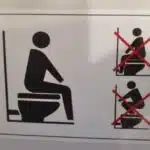

![How To Get Hair Out Of A Bathtub Drain 5 2/365 [Bathtub Drain]](https://green-life.blog/wp-content/uploads/2023/05/cOEu5edpkejq-150x150.jpg.webp)




